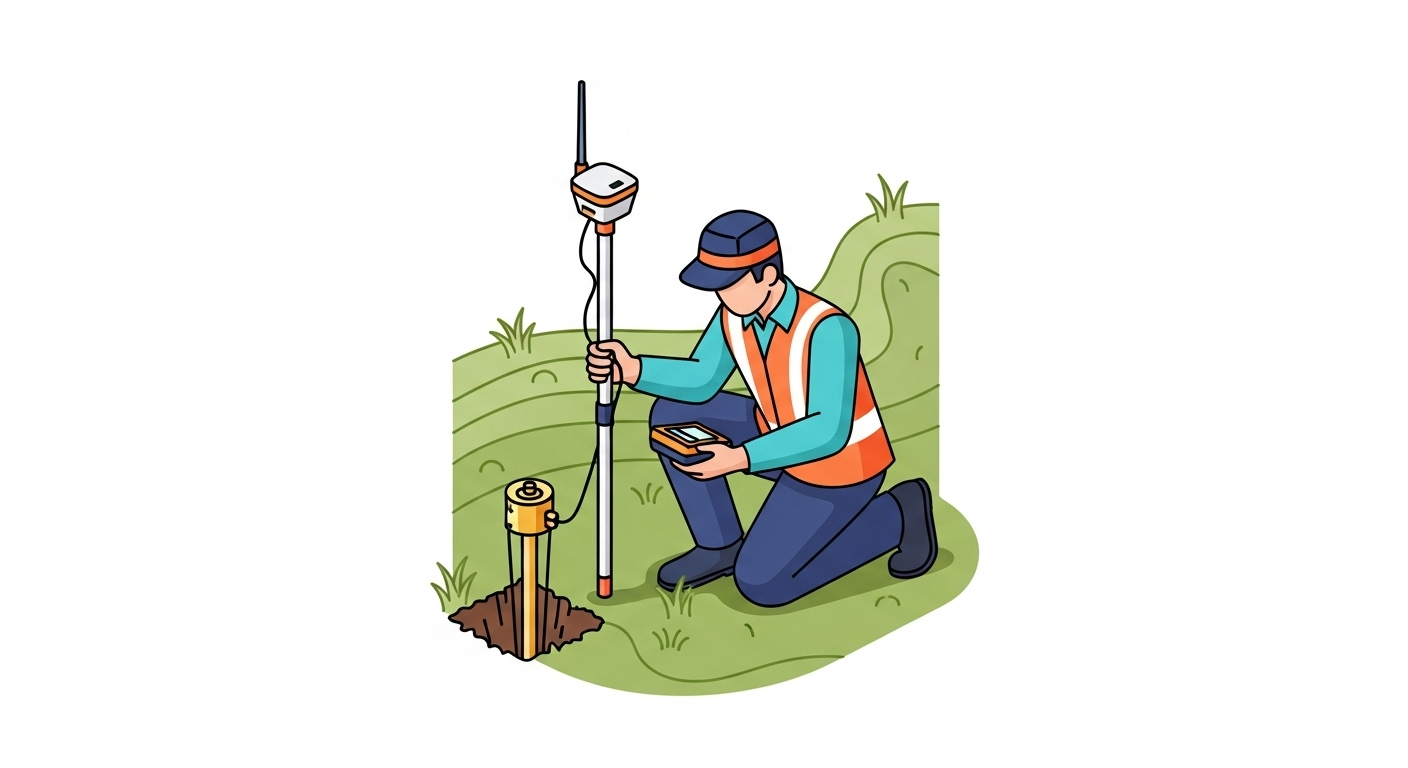Overview
Control network establishment is the foundational surveying process of setting up a framework of stable, high-accuracy reference points (monuments) with precisely determined coordinates (horizontal) and elevations (vertical). This network serves as the single source of truth for all subsequent surveying, design, and construction activities on a project, ensuring every measurement is consistent, accurate, and tied to a common datum.
Context & Industry Use
A control network is typically established at the very beginning of a project. It is a prerequisite for large-scale topographic mapping, engineering design, construction layout, and long-term monitoring. Standards for control surveys are rigorous, often following guidance from the National Geodetic Survey (NGS) and the Federal Geographic Data Committee (FGDC) to ensure specified accuracy orders are met and the network is reliably tied to the National Spatial Reference System (NSRS).
Estimation & Planning
- Estimation drivers:
- Required Accuracy: Higher accuracy (e.g., sub-centimeter) demands more rigorous methods, longer observation times, and more advanced equipment.
- Area Size & Geometry: Larger areas require more points and complex network geometry to maintain strength and consistency.
- Monumentation: The type of monument (e.g., deep rods vs. rebar) and quantity affects material and labor costs.
- Site Conditions: Terrain, vegetation, and satellite obstructions (urban canyons, canopy) influence the choice between GNSS and total station methods and impact field time.
- Existing Control: The availability and quality of existing control points to tie into can either reduce or expand the project scope.
- Client questions before quoting:
- What accuracy standard or classification is required (e.g., FGCS/NGS order)?
- What is the required coordinate system and datum (e.g., State Plane NAD83, NAVD88)?
- Are there existing project control points or benchmarks to tie into?
- What are the deliverables (e.g., adjustment report, coordinate list, monument descriptions)?
- What type of monuments are needed and where should they be placed?
Deliverables & Hand-off
- Control Report: A formal document detailing the project purpose, methodology, datum, coordinate system, and a summary of the adjustment results and achieved accuracies.
- Coordinate List: A table of all control points with their final adjusted coordinates, elevations, and descriptions.
- Control Diagram: A map or sketch showing the location of all control points and their relationship to the project site.
- Monument Description Sheets: Datasheets for each permanent monument, including photos and location ties to aid in future recovery.
Workflow with Job Book
- Tag each job with this scope to improve search and map filtering.
- Use budgets and estimates to plan labor/equipment; compare with similar past jobs.
- Create tasks and assign crews; schedule to avoid conflicts.
- Link key equipment like GNSS receivers and total stations as assets for availability and cost tracking.
- Capture field time (DWR/LEM) and timesheets; speed approvals and invoicing.
- Monitor WIP and profitability by scope, client, and region in reporting.
Common Pitfalls & Tips
- Datum Confusion: Using the wrong datum or epoch can cause significant coordinate shifts. Tip: Always verify and document the project datum (e.g., NAD83 (2011) epoch 2010.0) on all deliverables.
- Insufficient Redundancy: A lack of redundant measurements can hide blunders. Tip: Design networks with closed loops and multiple, independent measurements to allow for robust statistical analysis and error detection.
- Unstable Monuments: Placing control points on unstable ground or features leads to an unreliable network. Tip: Use appropriate monumentation for the required longevity and check for stability.
- Ignoring Scale Factors: Failing to account for the difference between grid and ground distances on large projects can cause layout errors. Tip: Clarify whether to use grid or ground coordinates and document the combined scale factor.


